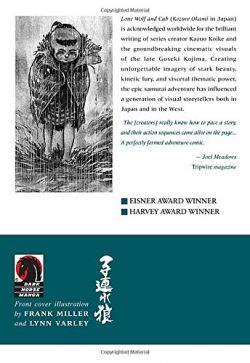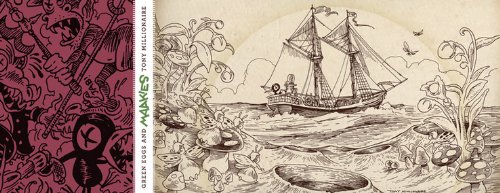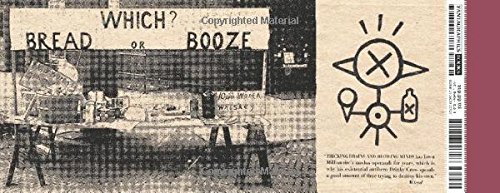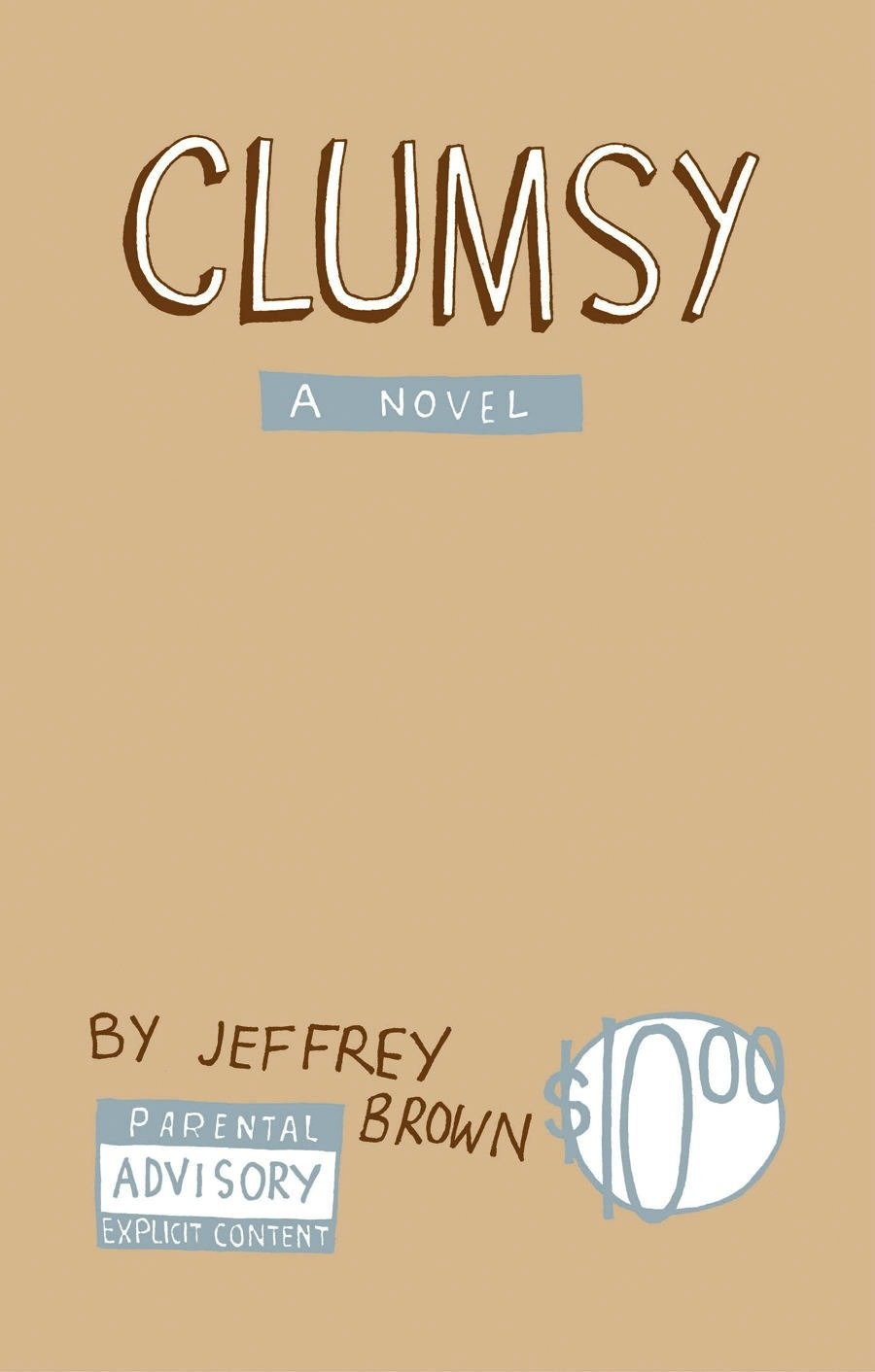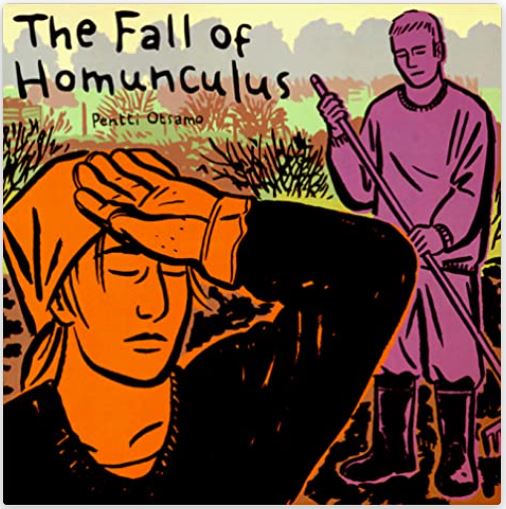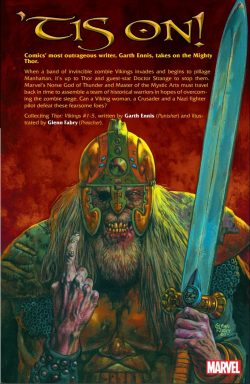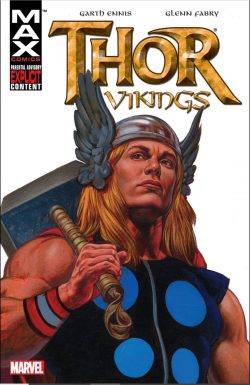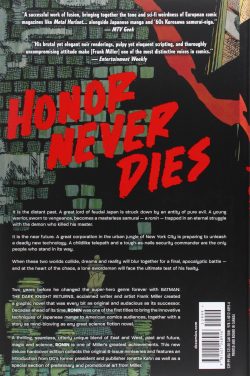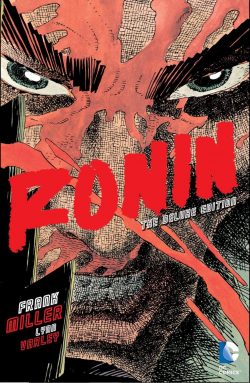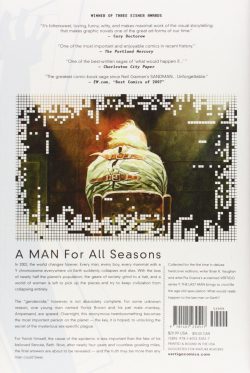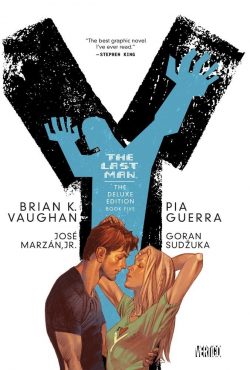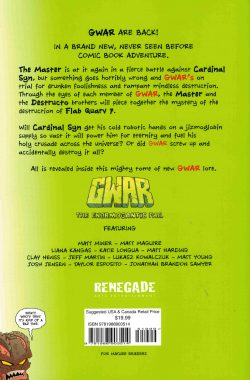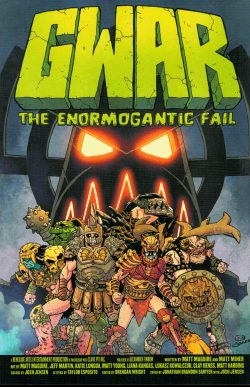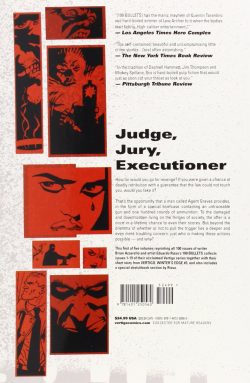
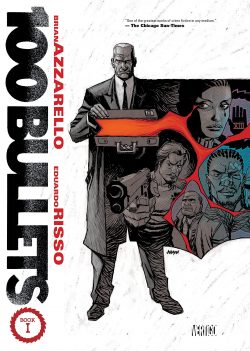
By Brian Azzarello, Eduardo Risso & various (Vertigo/DC Comics)Â
ISBN: 978-1-4012-3201-6 (Deluxe HB) 978-1-4012-5056-0 (TPB/Digital edition)Â
What’s your favourite crime movie? TV Show? Novel? Chances are it isn’t 100 Bullets, but trust me, it should be…Â
Now that there’s a little distance and the initial furore has died down, it’s time to review one of the most hyped comic sensations of the early 21st century. This initial compilation collects 100 Bullets #1-19 (August 1999- February 2001) and includes a brief tale that first appeared in seasonal anthology Vertigo: Winter’s Edge #3. Â
It all begins with eponymous revenge yarn ‘100 Bullets’…Â
Isabelle “Dizzy†Cordova is released from prison but isn’t happy. She’s returning to the crime-infested, poverty-wracked streets she came from, dead inside since while she was there her man and her baby boy were killed in a drive-by shooting.Â
On the ride back, an old man gets on the train. He looks like a spy from a 1960s movie. Sharp black suit, sunglasses, thin black tie, shiny attaché case: He says he’s Agent Graves. He says he knows all about Dizzy Cordova. He says Hector and Santiago weren’t killed by accident. He says that if she wants to make it right, he has a gun and one hundred rounds of ammunition that will never – EVER – show up in a police investigation. If she wants revenge she can have it free and clear…Â
And so begins one of the best crime comics of all time, but this premise, which would surely be enough for five hit seasons on any TV channel, is merely the beginning of a decade-long conspiracy thriller that is dark, engrossing and, after nearly 23 years, still a phenomenal achievement and tribute to the abilities of writer Brian Azzarello and illustrator Eduardo Risso and their loyal accomplices colourists Grant Goleash & Patricia Mulvihill, and letterer Clem Robins.Â
After practically constant re-reading, I’m still finding nuggets and gems that confirm its brilliance and the creators’ gift for forward planning and attention to detail.Â
Following on from Dizzy’s seemingly self-contained moment of epiphany comes ‘Shot, Water Back’ as we meet a down-on-his-luck barman whose entire life was destroyed by a rich girl’s petty whim. When she walks into his bar one night though, Agent Graves has just walked out, leaving behind him another gleaming attaché case…Â
Next follows an 8-page seasonal delight set in a police station. ‘Merry Christmas, Bitches’ is funny and chilling, proving that the short story form is not yet dead, and panel for panel is the best thing in this wonderful, terrifying so-very-adult book. More importantly, the apparent throwaway nature of this brief encounter will have crushing repercussions later on…Â
The fascinating proposition of what you would you do with a grudge, a gun, one hundred untraceable bullets and an ironclad guarantee of no comeback is more deeply explored through further seemingly unconnected interactions, consequently but so slowly unravelling the mystery of enigmatic Agent Graves – purveyor of both the ordnance and the inquiry.Â
‘Short Con, Long Odds’ introduces hard luck kid Chucky Spinks, a cheap grifter and ex-con who gets a visit from the cadaverous Man in Black. Chucky’s life was ruined when he got drunk and killed some kids: but at least his friend Pony always looked out for him when he got out of prison. Still, what kind of friend would drag your drunken ass out of the passenger seat and behind the steering wheel before the cops show up… and never tell you?Â
In ‘Day, Hour, Minute… Man’ we gain some insight into the manipulative Graves’ long-term goals as he engineers gang-war to draw some old comrades back into his game. There are intriguing hints of an old crew and some very high-powered bosses – operating as “The Trust†– after contact is made with brutal mob enforcer Lono and someone wonders out loud if somebody is reviving something called “the Minutemenâ€â€¦Â
‘The Right Ear, Left in the Cold’ then finds ice-cream vendor Cole Burns - who sells more than popsicles from his van – shocked to discover that his current boss torched an old folks’ home where Cole’s grandmother died. That’s just the start of a vicious round of revelations before Cole is revealed as another “retired†Minuteman. It looks like someone’s putting the band back together…Â
A viscerally satisfying one-off story follows as a waitress gets an unwelcome heads-up about her happy home in the chilling ‘Heartbreak, Sunnyside Up’…Â
Dizzy Cordova resurfaces next: bundled off to Paris to meet American ex-pat Mr. Branch: a reporter who once dug too deep and uncovered the greatest secret in US history. ‘Parlez Kung Vous’ begins unpicking the mysteries of the Trust, the Minutemen, and especially Agent Graves in a brutal yet delicate manner, engrossing and satisfying: yet manages the magician’s trick of leaving a bigger puzzle and readers hungry for the next instalment. In the meantime though, Dizzy learns some secrets and gets on the job training to die for…Â
The best crime comic in decades oh-so-slowly begins transforming itself into the best conspiracy thriller in the business with ‘Hang Up on the Hang Low’ as further hints about The Trust and their unique police squad The Minutemen slip out during the dark, bleak story of Louis “Loop†Hughes, a young street tough swiftly going the way of most of his kind in the streets of Philadelphia… at least until impeccable Agent Graves turns up. He knows exactly where Loop’s father has been for the embittered kid’s entire life, but he’s only telling about the last few years…Â
Curtis Hughes collects debts for one of the nastiest old loan-sharks in Philly. The broken down old leg-breaker has been around and seen it all, but wasn’t expecting a street punk to stick one of those guns in his face – and certainly not the son he abandoned all those years ago. Against all odds, he reconciles with his son and starts teaching him business and life; but once family duty and work allegiances come into conflict, there’s only ever one outcome. And just how does Curtis know about Graves and the Minutemen? As always, where Graves has been, lives change, bodies drop and more undisclosed secrets are uncovered…Â
The story portion of this book concludes with some scene-setting character portraits as ‘Epilogue for a Road Dog’ sees Loop reconnect with Agent Graves whilst wild card Lono discovers an unsuspected connection with the young gangbangers cousin Carlos. As Graves moves his pieces in a vast but still undeclared game unlikely alliances are forged in anticipation of a coming conflict…Â
Rounding out this extremely adult entertainment is ‘Dossier’: a sketchbook by Eduardo Risso offering early character designs of the broad and diverse castoff reprobates thus far embroiled in the unfolding saga…Â
These tense, bleak opening dramas have the generational grandeur of The Godfather trilogy, as much febrile resonance as The Wire and more punch than Goodfellas: weaving a tragic tapestry of family, disillusionment and overwhelming necessity, and although readers of the original comic books didn’t know it, laid much of the groundwork for the “Big Reveals†to come. Â
Astoundingly accessible and readable in its own right, this gripping tome is just step one on a path of intricate mystery and intrigue: one no fiction-fan (grown-up, paid-up and immune to harsh language and rude behaviour) could resist… nor should you. The slick switch from crime comic to conspiracy thriller is made with superb skill, with no diminution of the extreme violence and seedy sexuality that are hallmarks of this uncompromising series. Savage, brilliantly executed and utterly addictive, this is a landmark book in a landmark series.Â
© 1999, 2000, 2001, 2014 Brian Azzarello, Eduardo Risso and DC Comics. All Rights Reserved.Â

